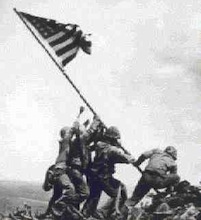 How to maximize learning from an experience? How to wring out every little bit of knowledge possible of every significant situation or major event? Too often we do not take enough time learn from what happens to us, both from our failures and even from our successes that might have been even greater.
How to maximize learning from an experience? How to wring out every little bit of knowledge possible of every significant situation or major event? Too often we do not take enough time learn from what happens to us, both from our failures and even from our successes that might have been even greater.
An after-action report (AAR) is a “lessons learned” analysis of any effort, event, or investment, generally written by a participant.
AARs were developed in a formal sense by the U.S. Army but probably have existed from the beginning of time. A recent history of World War II, “Pacific Crucible,” by Ian W. Toll, attributes much of the U.S. Navy’s success in the Pacific (even before Pearl Harbor, the U.S. Pacific Fleet was at best on par to the Japanese fleet) to its rapid adaption to air war at sea: “Every after action report included a section on analysis and recommendations and those nuggets of hard-won knowledge were absorbed into future command decisions, doctrine, planning and training throughout the service.”
An AAR can be a structured de-briefing process focused on
– What happened
– Why it happened
– How it could be done better.
The expectation is that the cycle of
– intent/goal setting/commitment
– planning
– preparation
– action/implementation
– adaptation in the field
– outcome
– review
will yield consistently better outcomes.
After-action reports differ from a post-mortem in that they are written by a participant with a focus on how the participant(s) can learn and improve outcomes in the future.
NOTES:
From U. S. Department of the Army Manual:
After-action reviews
• Are conducted during or immediately after each event.
• Focus on intended objectives.
• Focus on soldier, leader, and unit performance.
• Involve all participants in the discussion.
• Use open-ended questions.
• Are related to specific standards.
• Determine strengths and weaknesses.
• Link performance to subsequent training.
From Wikipedia:
Analytical AARs have three central objectives:
• Identifying problematic issues and needs for improvement
• Proposing measures to counteract problematic elements
• Obtaining “lessons learned”
Structure
• Overview
• Goals and objectives
• Analysis of outcomes
• Analysis of the performance shown on critical tasks
• Summary
• Recommendations


0 Comments